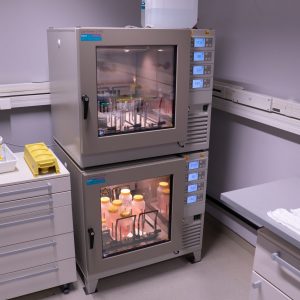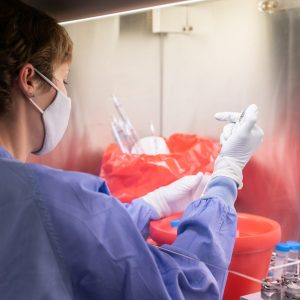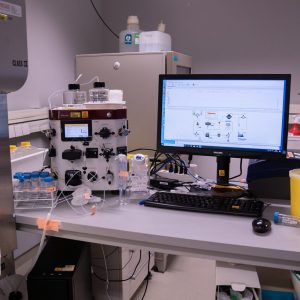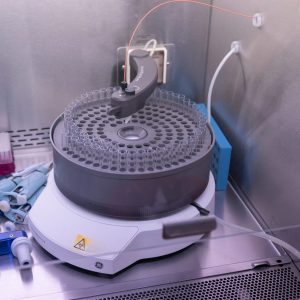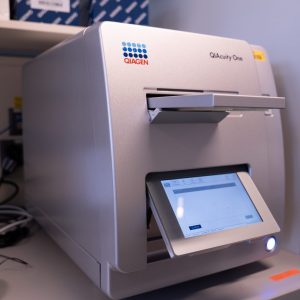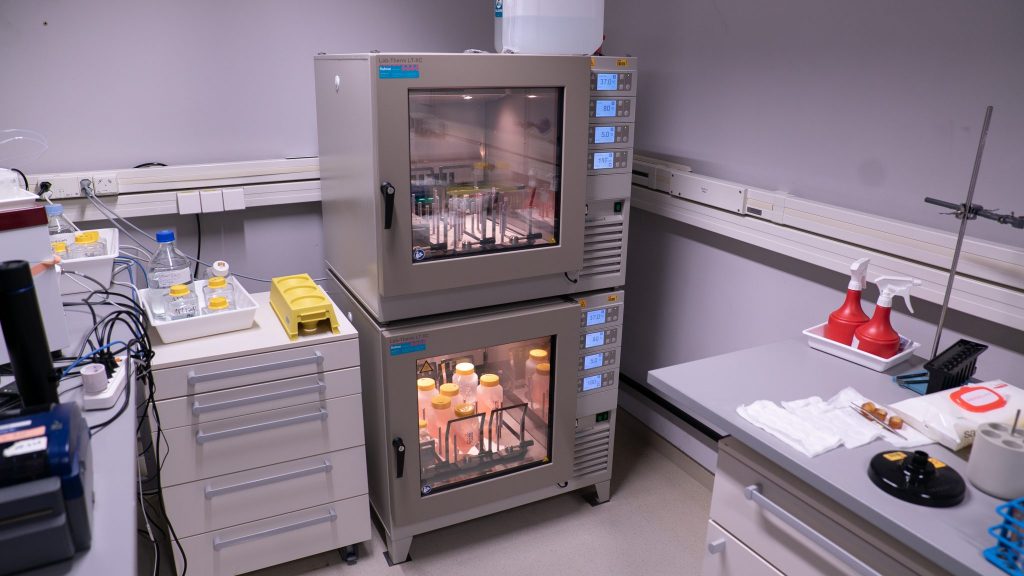
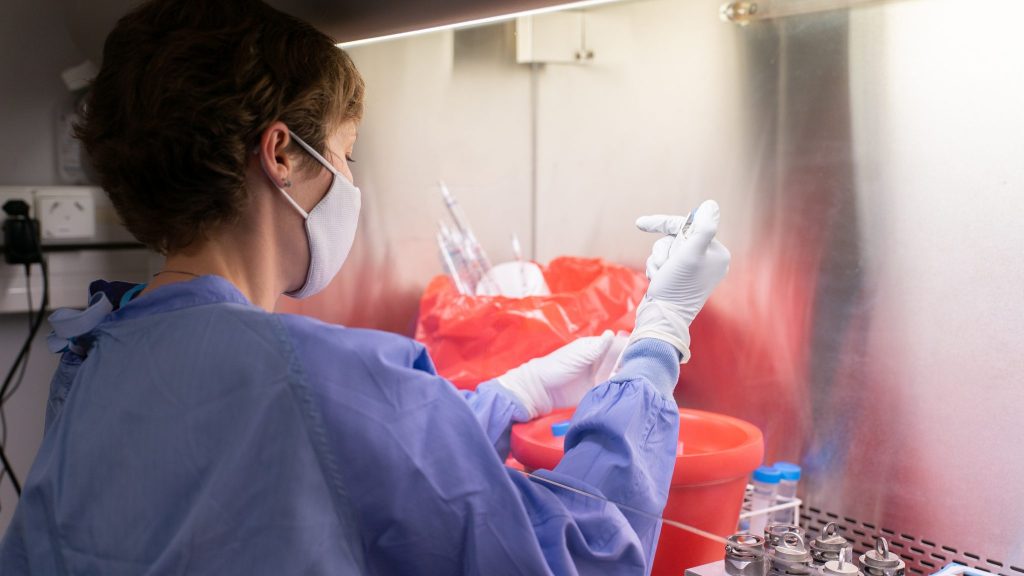
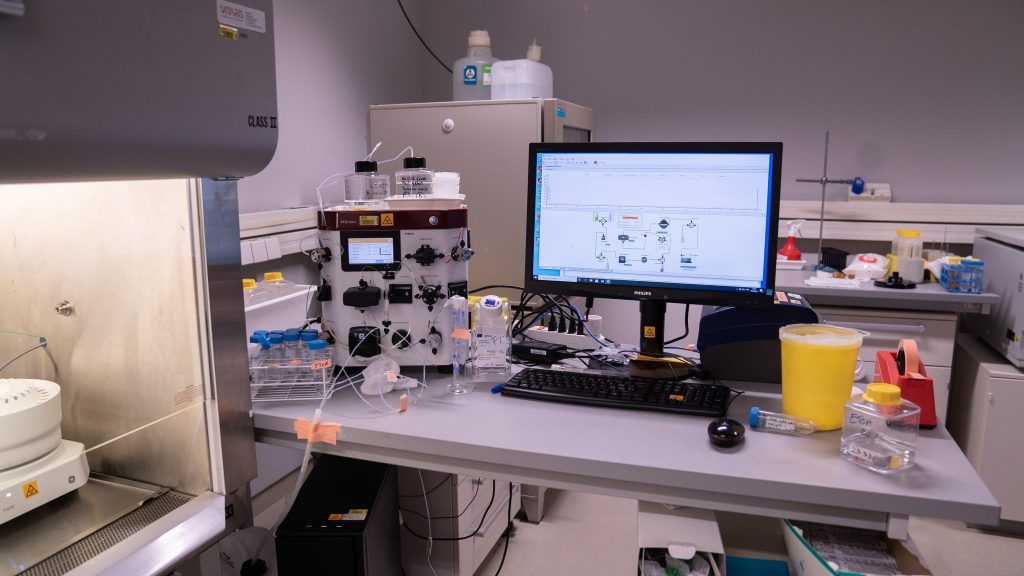

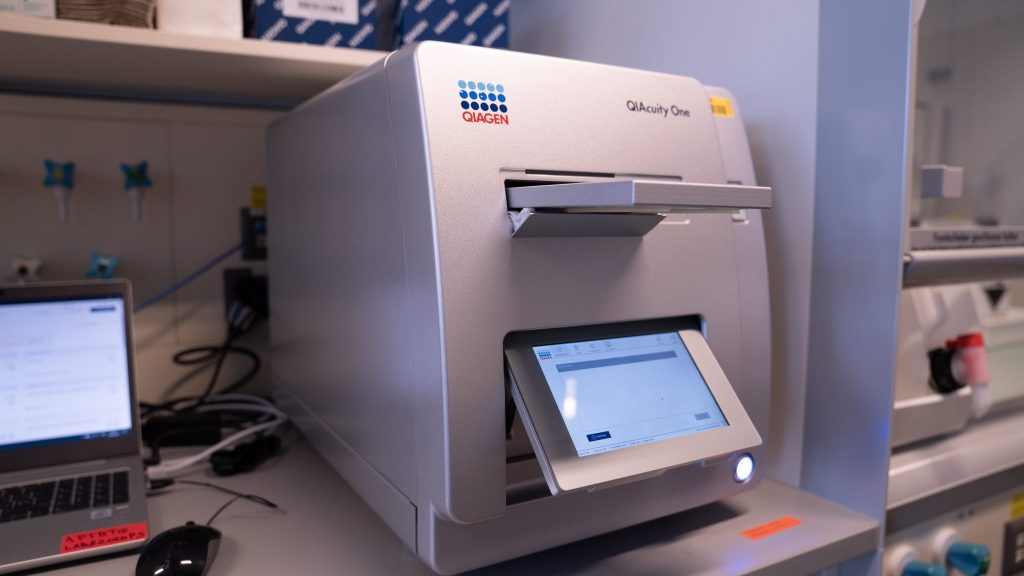
What we produce
At our platform we have the capabilities for the generation of Adeno-Associated Virus (AAV) and Lentivirus.
Vectors derived from the Adeno-Associated Virus (AAV) are highly efficient and broadly used tools for in vitro and in vivo gene delivery. In the past few years, AAV have emerged as one of the most effective vehicles for gene therapy due to their ability to transduce a wide variety of mammalian cell types, and their favourable safety profile as AAV is considered non-pathogenic in humans.
The Bertarelli Platform has developed various approaches to improve the yield and the quality of AAV vector production. We can produce a broad range of AAV serotypes to target the CNS (brain and spinal cord), as well as peripheral organs. We can produce most natural serotypes as well as engineered capsids.
Lentiviral vectors can effectively transduce a broad range of dividing and postmitotic cells. Therefore, they are used for in vitro and in vivo gene delivery, including for the development of gene therapies.
For production of lentiviral vector particles, we use classical packaging techniques for vector pseudotyping with the vesicular stomatitis virus G protein (VSV-G) envelope.
Production of lentiviral vectors can be tailored for various in vitro applications. Vectors can also be produced at high titer for in vivo projects, in particular for CNS applications.
For both AAV and lentiviral vectors, we can provide or adapt various constructs for (1) gene overexpression in a cell type specific manner, (2) gene silencing by RNA interference or (3) gene editing.
What we provide
If the construct is already available, we proceed with vector packaging.
In addition, we can adapt any construct with your sequence(s) of interest and/or perform the full design and cloning of the transfer construct. We have a broad collection of available vector backbones (AAVs and lentivirus) containing a variety of promoters, reporter genes and enhancers.
For AAV, our platform has developed various technologies to improve the yield and the quality of vector production. We currently obtain vector batches at high titer and purity using transient transfection of mammalian cells (HEK293) grown in orbital-shaken suspension cultures. Our purification procedures are mostly based on affinity or ion exchange chromatography methods.
For production of lentivirus, we use second and third generation systems based on transient co-transfection of adherent HEK293T cells. High-titer vector stocks compatible with CNS applications can be obtained by ultracentrifugation.
For AAV titration, our platform has established a reliable procedure to quantify the concentration of genome-containing viral particles using digital PCR (dPCR). This method allows for the absolute quantification of encapsidated viral genomes present in the final vector suspension.
For lentivirus the viral titers are determined by p24 antigen measurements, or/and qPCR-based infectivity testing
We can advise on methods and support the administration of vectors in rodent models.
